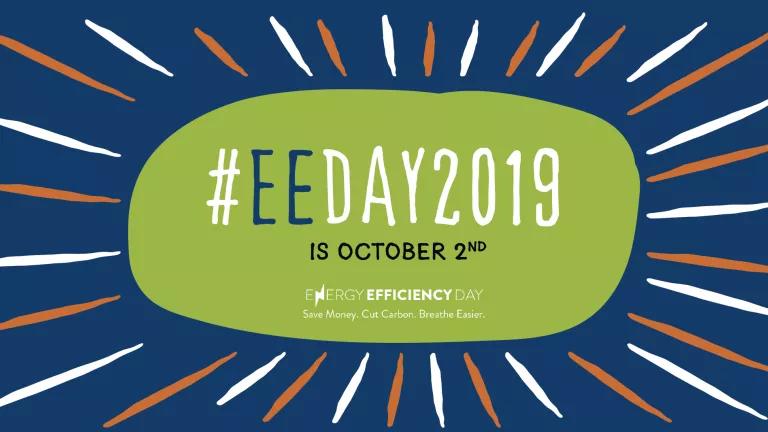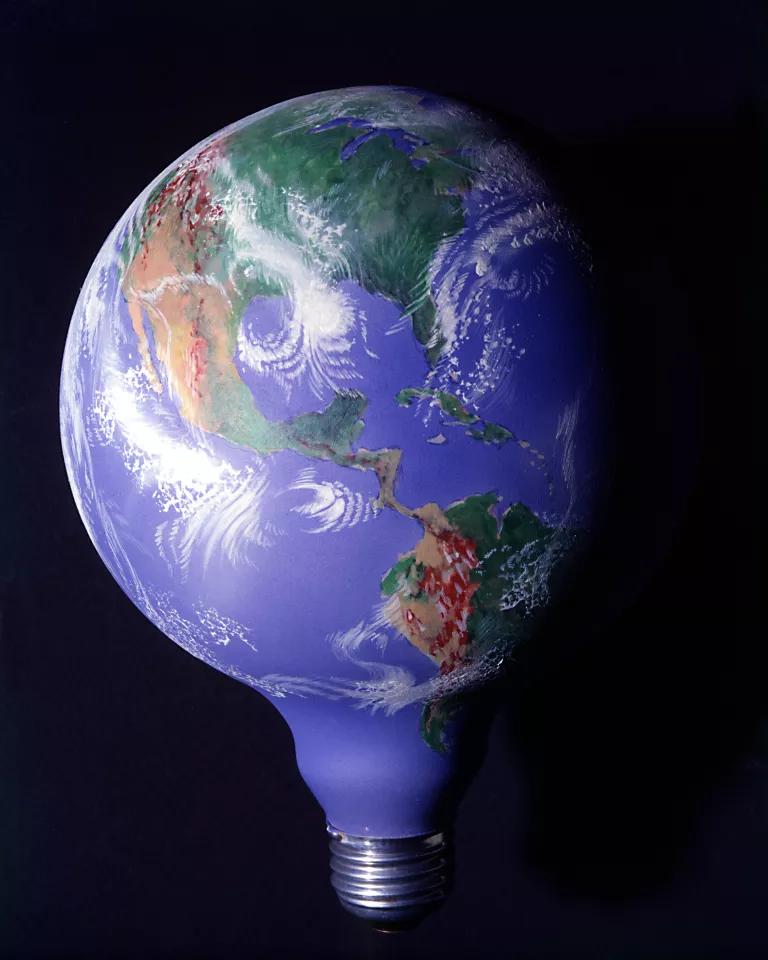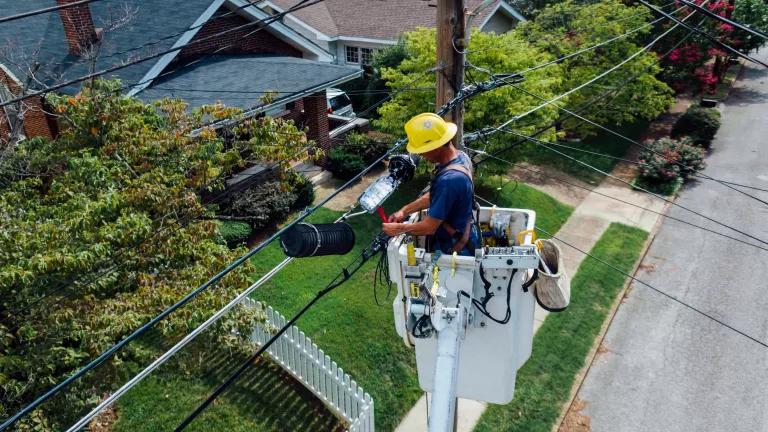
Energy Efficiency Day puts a spotlight on one of the most important tools in the transition beyond fossil fuels—energy efficiency. Although Illinois has strong standards, the Clean Energy Jobs Act (CEJA) would significantly expand the state’s energy efficiency requirements in its way to 100 percent clean energy by 2050. The gas efficiency provisions alone would bring $700-800 million in net benefits to Illinois residents.
Energy efficiency has a wide variety of benefits locally and globally. It saves customers money and creates good-paying jobs (such as the 89,469 energy efficiency jobs in IL currently). It is also the cheapest way for Illinois to make significant emissions cuts. The climate crisis is already hurting Illinois, and it is essential that our state does its part to cut pollution.
Energy Efficiency and the Climate Crisis
Energy efficiency is key for Illinois, and the rest of the world to fight the climate crisis. According to the American Council for an Energy Efficient Economy (ACEEE), “energy efficiency measures have been proven by many analyses to be the most cost-effective and fast-track way to address global climate change while reducing energy usage and more affordably expanding the use of renewable energy sources.” NRDC’s America’s Clean Energy Frontier report looks at the different solution pathways to get the U.S. to 80% greenhouse gas emissions reduction by 2050. The analysis shows that 40 percent of the climate solution in the U.S., the largest percentage in the report, can be provided by energy efficiency.
Energy Efficiency in Underserved Communities
Energy efficiency is also a critical tool for underserved communities. According to a study by ACEEE and Energy Efficiency for All (EEFA), the median energy burden for low-income households is three times greater than higher income households. And the share of income that Black, Latinx, renters and rural households spend on energy is also far greater than other households.
Energy efficiency is proven to help reduce this energy burden and help families to lower their bills. Underserved, limited-income communities also face a higher risk of getting their utilities shut-off due to bill non-payment. According to the NAACP’s Lights out in the Cold report, “utility disconnections can have a discriminatory impact on low income people, people of color, elderly people, people with special health needs, and other socially vulnerable utility customers.” Energy efficiency, especially holistic programs that are specifically targeted for underserved communities, is essential in helping to prevent and reduce shut-offs by lowering bills and helping with bill affordability.
The Future Energy Jobs Act
Illinois’ 2016 clean energy law, the Future Energy Jobs Act (FEJA), put Illinois on the map as a clean energy leader and significantly expanded electric energy efficiency programs. The Clean Energy Jobs Act (CEJA), a nation-leading clean energy bill currently being considered by the Illinois legislature, would expand energy efficiency further, including critical programs for underserved communities. Energy efficiency provisions in CEJA, both gas and electric, include the following:
Electric Efficiency in CEJA
- Extends electric efficiency long-term saving targets (which ComEd and Ameren are incentivized to hit, and penalized if they fall short), past the year 2030, to ensure continuous improvement in Illinois’ energy use and extended benefits
- Increases low-income (single family and multifamily) program minimum spending requirements by about 60 percent from FEJA:
- ComEd required to spend at least $40 million/year
- Ameren required to spend at least $13 million/year
- Encourages increased integration of clean energy programs, such as energy efficiency paired with solar, demand response, energy assistance, and more - especially in underserved communities—to help with program access and impact
- Expands EE opportunities for industrial customers, as they currently can’t participate in programs
Gas Efficiency in CEJA
- Roughly triples gas utility (Peoples Gas/Northshore Gas, Nicor, and Ameren) saving requirements and targets
- Institutes a new requirement to focus on longer-lived savings that provide greater economic and environmental benefits
- Adds a financial incentive mechanism, like the one on the electric side in FEJA, that gives gas utilities a motive to meet or exceed their efficiency savings targets, rather than just earning money for building pipelines and other capital investments;
- Mandates a minimum of 50 percent spending on whole building programs and/or individual measures that reduce heating needs, such as insulation and air sealing.
- Requires that at least 25 percent of total program spending (more than $75 million per year) is devoted to low income (single family and multifamily) programs
- Expands EE opportunities for industrial customers
- Substantial gas bill savings include:
- $4 in benefits (reduced bills) for every program dollar spent
- $700 to $800 million per year in net gas bill savings
Health & Safety in CEJA
- Set aside of 0.5 percent of gas and electric utility EE budgets for addressing low income health and safety issues, which often prevent energy efficiency retrofits from moving forward
- Covers small repairs necessary to complete efficiency upgrades, such as:
- Suspected asbestos-containing building materials
- Inadequate or missing carbon monoxide and smoke detectors
- Exhaust fan with improper venting
- Unsafe electrical work
- Gas leaks
- Excessive mold
- Pest infestations
Jobs in CEJA
CEJA also has provisions around clean energy jobs, including expanding opportunities for jobs in undeserved and environmental justice communities. FEJA focused primarily on solar jobs in these communities, but CEJA now expands its job provisions to includes all clean energy jobs—including energy efficiency. Energy efficiency jobs are the highest percentage of clean energy jobs in IL. According to Clean Jobs Midwest’s 2019 report, there are currently 89,469 energy efficiency jobs in IL. CEJA would help expand that number even further and ensure equity in the energy efficiency workforce. The jobs and equity pieces of CEJA include:
- Equity in the Clean Energy Workforce
- Gives preferences to businesses that include equity actions such as:
- Hiring a minority workforce, being a disadvantaged business enterprise, meeting equitable subcontracting requirements, hiring workforce training graduates, or creating community benefits agreements for projects.
- Clean Jobs Workforce Hubs
- Includes funding, community education, workforce training, and career placement for members of economically disadvantaged communities, environmental justice communities, communities of color, and former fossil fuel workers.
- Contractor Incubator Program
- Helps underserved clean energy businesses in their development
Energy Efficiency for All Illinoisans

Energy efficiency is an essential piece of the Clean Energy Jobs Act, with real customer savings, like the $700-800 million in net benefits to Illinois residents from CEJA’s gas efficiency provisions. There are critical dedicated carve-outs for underserved ad environmental justice communities, which will lead to more robust programs to makes homes and buildings more efficient, lower energy bills, and improve health.
CEJA will help ensure that everyone has access to IL’s clean energy future. We should be shouting these benefits from the rooftops! And what better day to do so—than Energy Efficiency Day.




